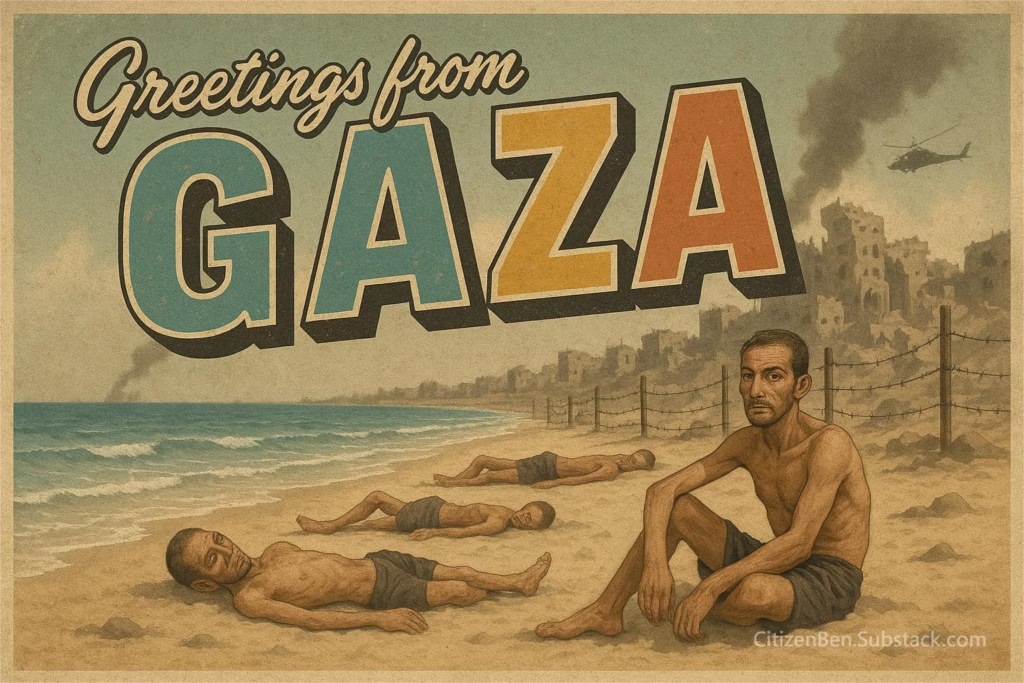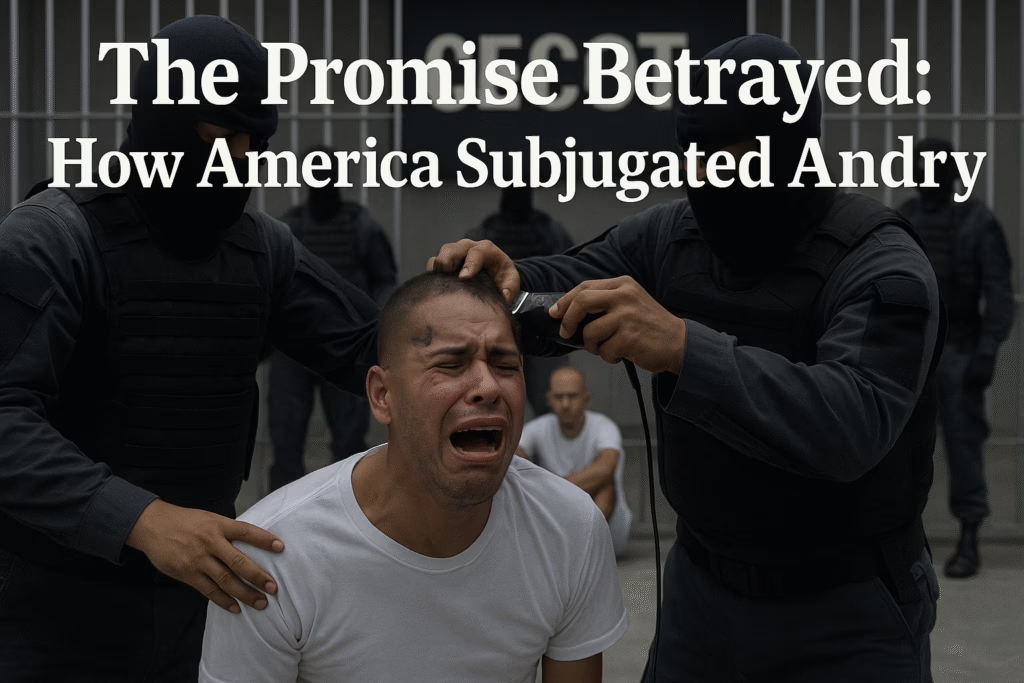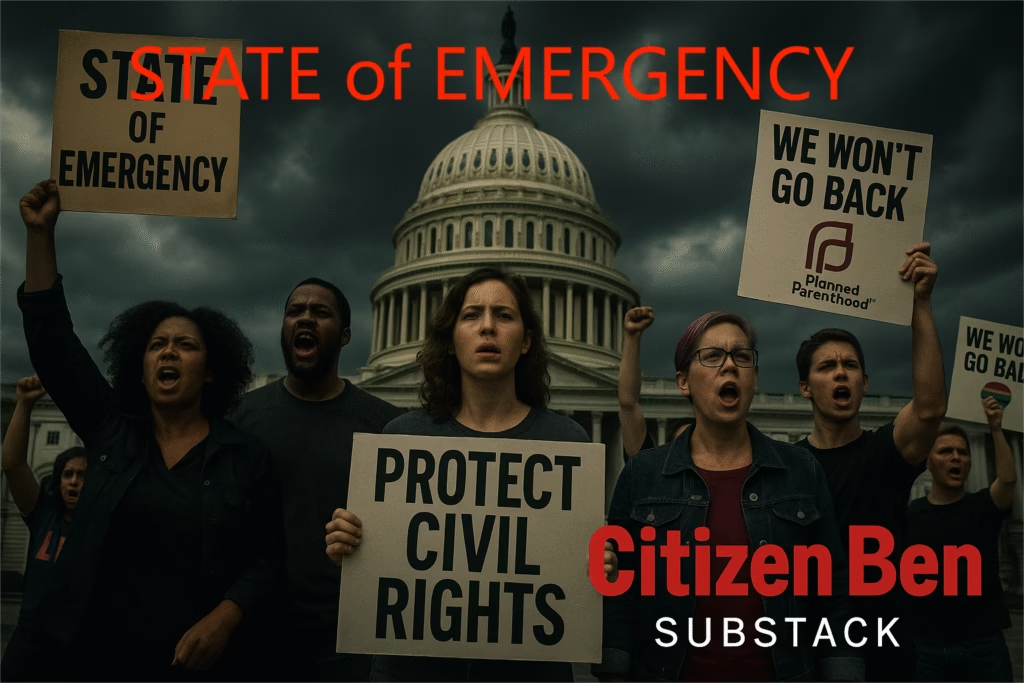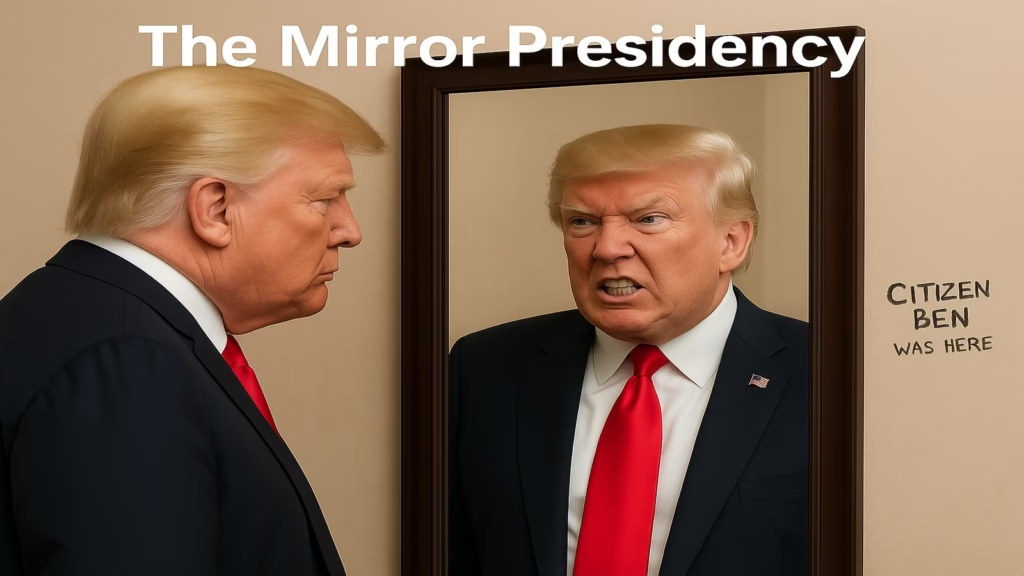Gaza’s Starvation and the Politics of Denial
“We are starving and they say it’s our fault.”
That’s what one aid worker whispered before collapsing from hunger outside a shattered clinic in Rafah. In Gaza, death no longer falls only from the sky. It comes in the silence of empty kitchens. In the eyes of children with swollen bellies. And now, in the heat of summer 2025, famine walks openly through the Strip.

According to the United Nations, nearly 2 million people in Gaza are experiencing crisis-level hunger or worse, with over 244,000 now classified in IPC Phase 5: Catastrophe, the formal threshold for famine. At least 66,000 children are severely malnourished, and over 127 people, mostly children, have already died from starvation, with many more expected unless full-scale relief is allowed immediately.
A Collapse Engineered
The destruction of Gaza’s food system hasn’t been incidental. Since early March 2025, Israel’s blockade tightened to an unprecedented degree, allowing minimal humanitarian aid while blocking fuel, water infrastructure parts, flour, and commercial food. The United Nations, World Health Organization (WHO), and numerous NGOs report that aid convoys are routinely delayed, denied, or attacked, and once inside Gaza, are often impossible to distribute safely. Since May alone, over 1,000 people have been killed while waiting for food, either trampled in stampedes or shot near aid distribution points.
Even the newly opened Gaza Humanitarian Foundation (GHF) centers, attempting to provide meals to thousands per day, have become zones of peril. Israeli contractors and military units have been accused of firing into food lines. Some UN staff and journalists now say they are “wasting away” along with the population they serve. One local aid volunteer who survived a sniper attack near a food convoy described it as “like feeding people through a minefield.”
International law forbids the use of starvation as a method of warfare. Yet the scale and consistency of what is unfolding in Gaza leaves little room for ambiguity: this is not a logistical failure. It is a system of deprivation.
The Official Story: Blame the Victim
Israeli officials, including Prime Minister Benjamin Netanyahu, insist that the crisis is exaggerated or manufactured. In public statements throughout July 2025, they claim that border crossings are open, that aid flows freely, and that any distribution problems stem from Hamas theft or UN incompetence. In one televised briefing, a senior Israeli military official said, “There are no limits on aid. Just bring the trucks.”
But these claims collapse under scrutiny. Data and satellite imagery confirm that only 20 to 30 aid trucks are being allowed in per day, far below the 500+ trucks that entered daily before the war. Aid groups report thousands of shipments stranded, and even successful convoys have to reroute or halt due to airstrikes or gunfire. UN officials have flatly rejected Israel’s accusations, with one senior coordinator calling the claims “an outrageous reversal of reality.”
Meanwhile, Netanyahu’s government announced limited ‘tactical pauses’, daily windows of ceasefire in designated areas to allow aid delivery. But these have largely failed to reduce civilian deaths or address the larger crisis. In most of Gaza, the hunger only deepens. Children now forage for leaves and animal feed. Mothers boil water to trick their stomachs into thinking they’ve eaten. Entire families survive on a few ounces of lentils per day.
What Is the Goal?
Israel claims its war aims are narrowly focused on dismantling Hamas and securing peace for its citizens. But many now question whether the starvation of Gaza is a byproduct or the point.
Human rights groups and international legal experts argue that the Israeli government is using hunger as a weapon of war. This accusation is bolstered by comments from Israeli politicians and advisors who have advocated for the “voluntary resettlement” of Palestinians, a phrase critics say is a euphemism for ethnic cleansing.
If Israel’s intention were truly humanitarian, as officials claim, then why are journalists being barred, aid workers killed, and UN agencies demonized? Why does food still sit on trucks at the border while children die just miles away?
The answers may lie not in logistics, but in politics. By breaking Gaza, by making it uninhabitable, Israel could push toward a long-sought goal: the depopulation and permanent weakening of Palestinian society. Even if unspoken, that intent now echoes through every empty pantry and every hospital morgue.
The Human Toll
It’s easy, from far away, to speak in abstractions, “aid corridors,” “security zones,” “terrorist infrastructure.” But on the ground in Gaza, the reality is heartbreakingly intimate.
A father feeding his daughter salt water. A mother wrapping her malnourished son’s body in scraps of a UN tent. A teenage boy, once a promising student, is now too weak to stand.
Journalists, doctors, and relief workers describe what they are witnessing as a “death spiral.” Some can no longer hold their cameras, their stethoscopes, or even pens.
And yet the world watches. Some respond with indifference. Some with disbelief. Others with hand-wringing statements that stop short of action.
America’s Role Under Trump: Enabler, Architect, or Peacemaker?
Under President Donald Trump in mid‑2025, U.S. policy toward Gaza became deeply entwined with Israeli strategy and, critics warn, with Gaza’s suffering.
Acknowledging Starvation, Then Funding the Machinery of Siege
In May 2025, Trump publicly acknowledged that “a lot of people are starving” in Gaza and pledged that the U.S. would “take care of” the situation. Yet just weeks later, his administration approved $30 million for the U.S.-Israeli-backed Gaza Humanitarian Foundation (GHF), a controversial aid system surrounded by military control and linked to hundreds of civilian deaths at distribution sites, according to multiple humanitarian reports.
Though framed as humanitarian aid, GHF has been accused by international observers of creating “aid cages”, heavily restricted zones that put starving Palestinians in the line of fire. As of July 2025, over 1,000 people have been killed while seeking food, many of them at or near these U.S.-funded sites.
Ceasefires Blocked, Critics Silenced
While the Trump administration sent limited aid via airdrops and naval convoys, it continued to block U.N. resolutions calling for a complete humanitarian ceasefire and unrestricted access to food, fuel, and water. Special envoy Steve Witkoff blamed Hamas for the impasse, declaring it “lacked the desire to reach peace,” even as famine engulfed nearly half of Gaza’s population.
But perhaps more troubling is the domestic crackdown on those who dare speak out.
Across the U.S., students, doctors, and citizens protesting the starvation in Gaza have faced accusations of antisemitism, job loss, and surveillance. In June and July 2025, dozens of peaceful demonstrators—many of them Palestinian-American—were arrested or detained by ICE, with some facing revoked visas or deportation proceedings for “anti-Israel incitement” under newly expanded enforcement directives. One protester in Michigan, a nursing student holding a sign reading “Let Gaza Eat,” was detained for 36 hours and told she may be denied naturalization due to “extremist sympathies.”
Critics, including civil liberties groups, say the administration has blurred the line between antisemitism and legitimate protest—weaponizing the label to silence dissent. Journalists have been fired, university departments defunded, and social media accounts suspended for even modest criticism of Israel’s policies. The result is chilling: a humanitarian catastrophe unfolding abroad, and a climate of fear and censorship at home.
The Vision Behind the Aid
Trump’s broader vision was made explicit in February 2025, when he proposed that the U.S. “take over” Gaza and resettle its population, rebuilding the territory as a tourism hub—a proposal derided by Palestinians and human rights groups as colonial fantasy. Though partially walked back, key elements remain in place: forced displacement, foreign control, and exclusion of Palestinians from their own land.
The GHF and proposed “Humanitarian Transit Areas” (HTAs) reflect this logic. Critics warn they serve not humanitarian ends but demographic engineering—structures meant to control and eventually erase a people under the guise of food and order.
Domestic Resistance
Despite pressure, resistance continues. Senators Van Hollen, Sanders, and Booker have led a call to end GHF funding and return to U.N.-coordinated relief, calling the Trump-backed effort “a death trap.” Veteran groups, pediatricians, and rabbis have issued public letters urging an end to U.S. complicity in the starvation of civilians.
But their voices too are often drowned out—labeled “anti-American,” “terrorist sympathizers,” or simply “too emotional.” And yet, their cry echoes that of the hungry in Gaza: Let them live.
Why This Matters: A moral collapse
The use of starvation, particularly against children, as a military tactic is a war crime under international law. And allowing it to happen with impunity sends a signal to every authoritarian regime on Earth: Hunger works.
Silence is complicity. And moral clarity means calling this what it is: a slow-motion atrocity unfolding in real time. Gaza’s civilians are not collateral damage. They are the target.
America’s Complicity: The Gaza Crisis and U.S. Policy
While bombs fall and children starve, the question must be asked: where is the United States—the nation that claims to be the moral compass of the world?
The answer is uncomfortable.
Throughout the 2025 Gaza war, the U.S. has played a pivotal role, not as a neutral arbiter, but as a key enabler of Israel’s siege. Despite growing evidence of famine, civilian massacres, and blocked humanitarian aid, the Trump administration in early 2025 approved additional military aid packages to Israel, including advanced munitions, fuel, and precision-guided bombs. These shipments continued even as global humanitarian organizations pleaded for a ceasefire and warned of “mass death by starvation.”
Efforts to push for international accountability were repeatedly vetoed or watered down by U.S. diplomats at the United Nations. In March 2025, the U.S. used its veto power to block a UN Security Council resolution demanding an immediate humanitarian ceasefire and full access to aid corridors. Officials claimed it would “interfere with counterterrorism operations,” despite concurrent UN reports of acute malnutrition and mass displacement.
Meanwhile, calls from members of Congress, civil rights leaders, and international legal scholars to condition U.S. aid on the lifting of the blockade or to halt arms transfers were dismissed as “politically inconvenient” or “pro-Hamas.” Even when photos emerged of children dying in hospital corridors without food or clean water, the White House issued carefully worded statements about “Israel’s right to defend itself” and called on “both sides” to show restraint—failing to acknowledge the asymmetry of power or the scale of civilian death.
While the U.S. has sent some humanitarian aid—primarily through air drops and logistical support for Egypt and Jordan—it remains a fraction of what is needed. It pales in comparison to the weapons that continue to arrive by air and sea. Some of the very aircraft dropping bombs by day are dropping food by night, a grotesque contradiction not lost on Gaza’s survivors.
In short, American policy has not just failed Gaza, it has helped build the machinery of its suffering. The language of freedom and democracy rings hollow when it is accompanied by silence in the face of famine, or worse, the funding of it.
Speaking from his golf course in Scotland this week, President Trump complained that he never received a thank you for “$60 million” worth of food to Gaza.
To put this into perspective, President Trump has spent over $60 million on golf outings with taxpayer money since taking office on January 20th.
Until the U.S. matches its rhetoric with accountability—cutting off military aid, demanding access for food and medicine, and refusing to greenlight war crimes—its hands, too, are not clean.
What You Can Do:
- Demand full access for humanitarian aid. Call your representatives and urge immediate pressure on Israel to open all crossings unconditionally.
- Support independent journalism and aid groups. Donate to UNRWA, Doctors Without Borders, or trusted local organizations.
- Raise awareness. Share survivor testimony, report coverage, and hold media accountable when they obscure the truth.
- Protest starvation as policy. Join or organize peaceful protests calling out starvation as a war crime.
“The opposite of love is not hate, it’s indifference.” —Elie Wiesel
In Gaza, the dead do not die quietly. Their hunger cries out, not just for bread, but for justice. If we do not listen now, when will we?
—Citizen Ben
Citizen Ben is a reader-supported publication. To receive new posts, pods, and support my work, become a free or paid subscriber today.
Related Podcast: Welcome To GAZA
Related Article: Two Truths are True: Israel’s Trauma and Gaza’s Agony



